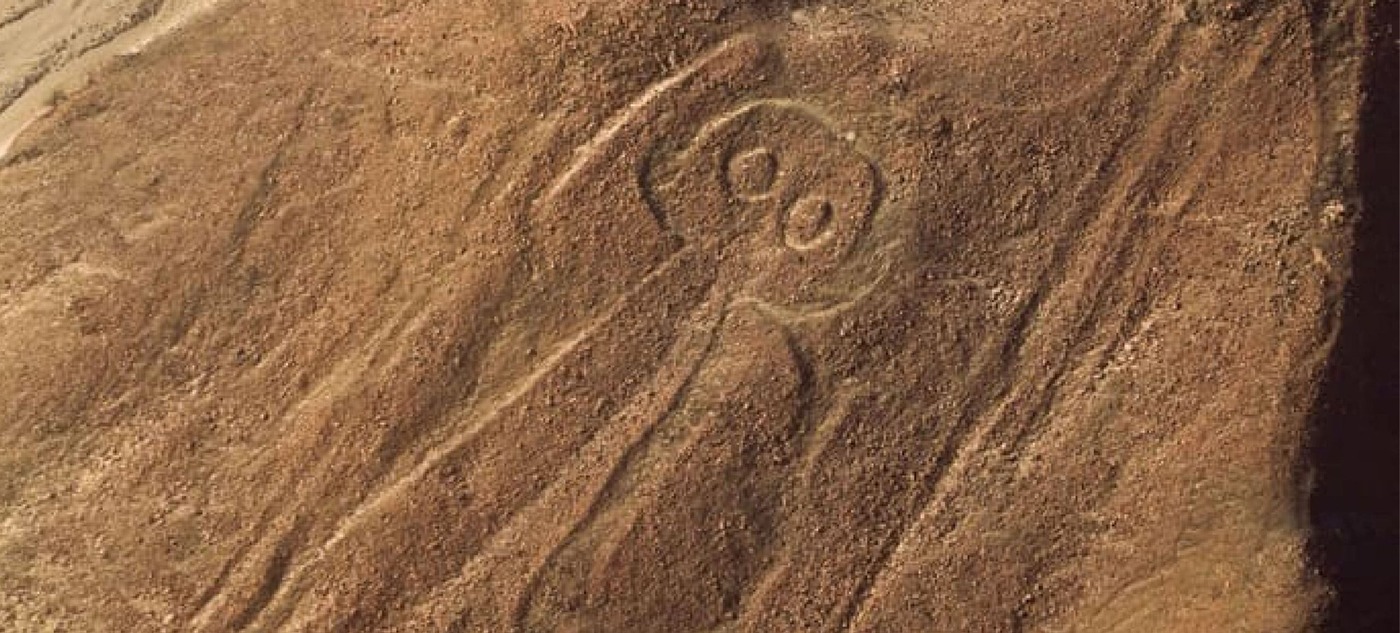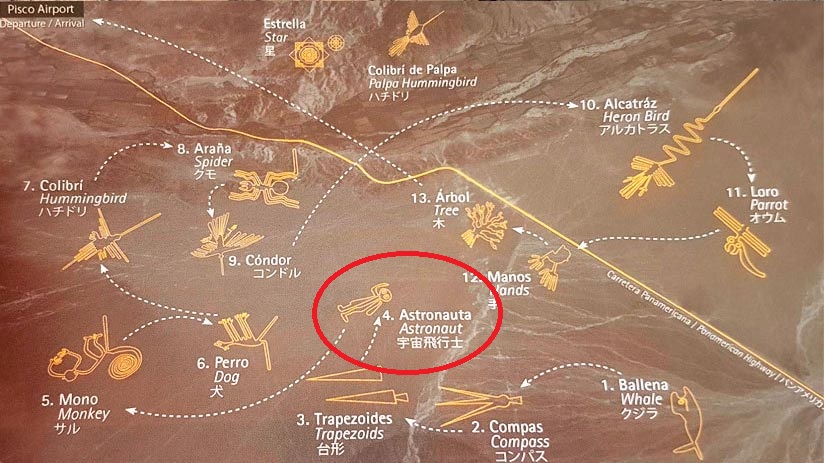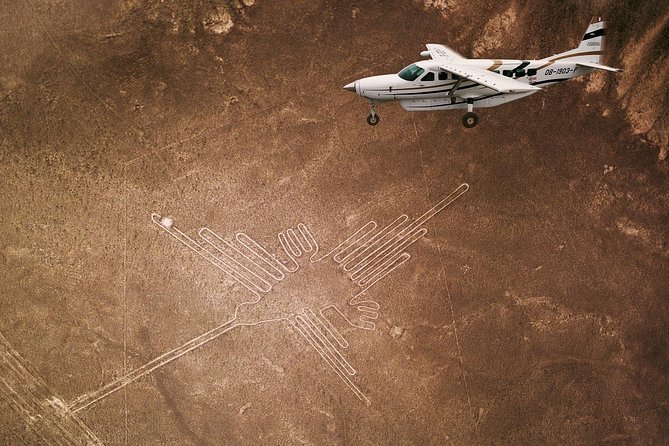
Have you ever heard of the intriguing Nazca Lines astronaut before?
One of the world’s greatest archaeological mysteries, we can find it hidden deep within the desert plains of southern Peru. Unlike the more familiar geometric shapes and animal figures, this one has a unique design with a round head and raised arms – and very much resembles a modern astronaut.
In this guide we’ll explore everything you need to know about the Nazca Lines astronaut, including various theories as to why it was created. We’ll also look at how you can to the Nazca Lines too, both from within the region and from Lima.
Table of Contents
Quick Answer: The Nazca Lines are over 2,000 years old, and remain mostly unknown despite being surveyed by Peruvian archaeologist Toribio Mejia Xesspe in 1927. Although local inhabitants had seen the massive geoglyphs for centuries, it wasn’t until a 1927 aerial survey led by Peruvian archaeologist Toribio Mejía Xesspe that the true scale of the lines became apparent.
From the sky, the lines were finally visible, and at last, their shapes were determined. This discovery went viral and initiated the preservation efforts we see today. Since then, various researchers, including National Geographic teams and UNESCO, have worked to protect the lines from environmental threats like erosion and human activity.
With the use of modern technology, such as drones and satellite imagery, researchers can now document and monitor the geoglyphs more effectively so they don’t just fade away. The preservation of the Nazca Lines is very important to the descendants of the Nazca people.
The Nazca Lines astronaut is one of the most infamous and mysterious geoglyphs known to date. The other Nazca lines depict animals and geometric patterns that can be traced back to the Nazca people. However, this intergalactic shape surely does stand out from the others.
The astronaut looks very humanoid shaped with interesting features; a round head, large eyes, and what some interpret as a waving arm. Its nickname, “Astronaut,” comes from theories that it resembles an extraterrestrial being.
What makes the Astronaut even more intriguing is its placement on a hillside, so it’s rather visible from the ground, unlike the other Nazca lines that are mostly visible from above.

The creation of the Nazca Lines astronaut has long been debated, and there are many theories as to where the lines came from and what they mean. There are two main theories:
Some believe the geoglyph is an artistic representation of the Nazca people’s spiritual or cultural practices, and was potentially made as a way of marking their territory (which is the same case with others such as the Nazca Lines Spider). This could further be backed up given there were many hostile tribes in Peru during this era, and was a way of creating a more safe community.
Others argue that it may have astronomical significance. Was it a marker or map aligned with celestial entities? This theory suggests the figure could represent a connection to the stars or a cosmic deity. Of course, the most popular theory is the idea that the Astronaut is a depiction of an ancient extraterrestrial visitor.
The Nazca Lines themselves are located in the Peruvian desert, and are approximately 450 kilometers (280 miles) south of Lima.
The most accessible way to reach them is by bus or a combination of bus and flight, however it will typically take 6–8 hours which can be somewhat uncomfortable (especially given that they can get quite hot – or leave the air-conditioning on too long).
Personally we think that flying over them from Pisco (which is just a few hours away from Lima) is the very best option. On a Nazca Lines Flight Tour From Lima you’ll only need to head a couple of hours south from the Peruvian capital, and then fly over them without actually having to reach Nazca. The flight lasts about 30–45 minutes, and offers the best views of the intricate geoglyphs.

The Astronaut figure in the Nazca Lines stretches around 100 feet (30 meters) in length. This makes it one of the largest geoglyphs in the Peruvian desert but in terms of the Nazca lines, it’s actually one of the smallest.
It’s believed that they were created by the ancient Nazca people between 500 BC and 500 AD by removing the reddish surface layer of desert stones to expose the lighter-colored soil underneath.
Yes! In fact, it’s the best way to see the lines. As mentioned above, Flights last 30–45 minutes and offer incredible views of the geoglyphs. We recommend booking our Nazca Lines Tour From Lima where you’ll get to enjoy a late morning flight which is best for clear skies and less turbulence.
And that’s all for this guide on what you need to know about the Nazca Lines astronaut.
The Nazca Lines are without a doubt one of the coolest geoglyphs known to man, and are a reflection of the Nazca people who thrived in the Southern Peruvian desert between 500 BC and 500 AD. And in particular, the Nazca Lines astronaut really stands out given its extraterrestrial feel and significance, making it one of the most popular to spot when flying from above.
Are you ready to explore the Nazca Lines? Here at TravelBuddiesPeru we operate a memorable day tour from Lima where you’ll get to see all of these ancient symbols with an overflight, as well as visit Huacachina and the incredible Ballestas Islands.
Offers, Travel Tips, news and more.